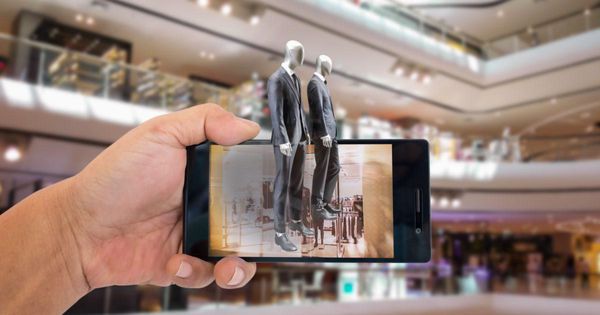Augmented reality (AR) – technology that overlays computer imagery over real-world imagery as seen by cameras in real time, is being eagerly adopted by business.
In retail, in particular, there are obvious opportunities for allowing customers to see how products will fit into their lives before they’ve taken them out of the store.
Augmented Reality In Retail – The Incredible Case Of Tenth Street HatsAdobe Stock
Google and Apple have both developed AR frameworks to allow developers to craft bespoke AR experiences, and Amazon lets users of its mobile app test out a limited number of products through their phone cameras.
Furniture retailer Ikea, too, has dipped its toes into the AR waters, creating an app that allows customers to see how a sofa or bookcase will look in their living room.
AR is now traveling the path of democratization that new technological breakthroughs tend to take. Pioneered by the big tech companies with the specialist knowledge and resources to implement them (see also: artificial intelligence, and in fact computers in general), the emergence of as-a-service providers mean smaller and niche retailers can now play the game too.
Tenth Street Hats – a family-owned retailer in business since 1921 partnered with AR solutions provider Vertebrae to fulfill an obvious use case – allowing customers to try on hats from the comfort of their own home.
CEO Carson Finkle told me that an encounter with a Vertebrae rep on the golf course piqued his interest in the technology.
He tells me “I heard about some of the brands they were working with, and I thought, this could really work with hats.”
Finkle says he was attracted to the idea as it offered “Something that can differentiate us from the competition – something new, with a ‘wow’ factor, and this definitely fit the bill.”
Vertebrae produced a prototype view of how trying on hats could work in AR. The system lets users view hats on their head at any angle, matching them with outfits they are wearing and snapping pictures if they hit on a particularly sharp look.
Finkle says “I follow the e-commerce space intently – what everyone else is doing on their product pages – and this definitely stood out to me.”
While the feature has only just been launched and it’s too early for Tenth Street to be releasing solid metrics on its performance, Finkle says that there’s already evidence that hats are selling better when customers can access an AR version through their site.
The performance will be measured by whether pages, where customers are funneled towards the AR experience, will convert more successfully than pages that don’t.
“My guess is that when we take a look at the end of the year, we will see that they do,” Fickle says.
Speaking of pages, a major factor in Tenth Street’s decision to work with Vertebrae was the fact that their solution is implemented directly into existing websites. Rather than using an app, Tenth Street customers see the option of launching the AR experience as soon as they touch down on the homepage.
This was an important factor as asking customers to download a new app creates friction.
With standardization quickly becoming established, though, it’s clear that AR will spread beyond computers and mobile phones. After a shaky start more than five years ago, in the last year, Google has revamped its Glass lenses, and Microsoft has just announced a close to half-billion dollar deal to provide its Hololens devices to the US Army for training purposes.
Back in retail, details emerged this year of Amazon applying for patents for an “AR mirror.” It’s not hard to imagine they see another entry-route into people’s homes, for a device that will work with their Alexa technology, allowing users a full body view as they try on clothes by the retailers who sell through them.
AR uses machine learning techniques to become increasingly accurate at augmenting the real world with virtual objects, but in the near future, we’re likely to see it making decisions about which products to show us. Imagine a screen that can analyze an outfit we are wearing, select a hat, coat or bag that will complement it, and take us to a retailer that offers an AR version for us to virtually try on. Simply by speaking to it, we will then be able to assess it in a variety of different colors and styles, before making an order when we settle on something we like.
Such a streamlined experience may still be some way off, but the building blocks are being put in place to make it a possibility. AR Screens are unlikely to be cheap to start with, so the first place most of us are likely to come across them will be stores – examples are out there to be found already, such as the “magic mirror” makeup retailer Charlotte Tilbury has installed at its London store. As bricks ‘n’ mortar retailers increasingly look for new ways to engage customers in-store, we can expect this to become more common.
While there is clearly a huge appetite, it’s equally clear that we’re only at the start of the journey when it comes to AR in retail. In 2019, I expect we will see many more innovative applications, both in-store and in our homes.

